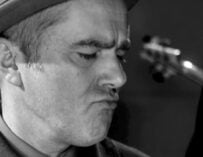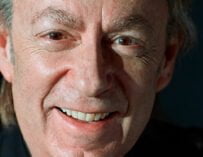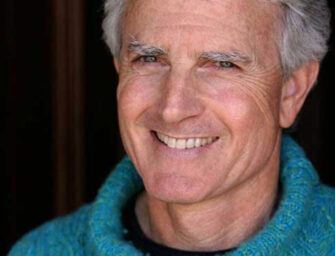
Glen Ballard: “It took about an hour, honestly… We did a little scratchy demo of it, and I just thought, ‘Okay, well, good luck!’”
The award-winning songwriter had to be convinced by his co-writer to write one more ballad for the King of Pop
Six-time Grammy Award winner Glen Ballard is one of popular music’s most accomplished producers and songwriters, whose records have sold more than 150 million copies worldwide. Over the past five decades, the likes of Alanis Morissette, Quincy Jones, Aretha Franklin, Barbra Streisand, Dave Matthews, Shakira, Katy Perry, Idina Menzel, Ringo Starr, Van Halen, and many others, have benefited from the American’s Midas touch.
One of the many hits that Glen created includes none other than Michael Jackson’s 1988 ballad, Man In The Mirror. The fourth single from his seventh solo album, Bad, it topped the Billboard Hot 100 for two weeks, becoming Jackson’s tenth No 1 single on the chart. The release was nominated for Record of the Year at the 31st Grammy Awards and in 2018 was certified three-time Platinum in the US.
However, as Glen explains, Man In The Mirror wouldn’t exist at all, if it wasn’t for his collaborator – singer and songwriter, Siedah Garrett – persuading him to write one more song…
First featured in Songwriting Magazine Winter 2022 issue

Released: 6 February 1988
Artist: Michael Jackson
Label: Epic
Songwriters: Glen Ballard, Siedah Garrett
Producers: Quincy Jones, Michael Jackson
UK chart position: 21
US chart position: 1
“But then I got a call from Siedah Garrett, who’s my dear friend, collaborator, one of the great singers… I think it was like on a Thursday night, and she said, ‘We have to write another one for Michael.’ I said, ‘Are you kidding? I’ve struck out. I did 10 and…zero.’ I mean, I’ve written so many songs like that, where if it works, it works, and if it doesn’t, I’ll probably reconfigure it. But I don’t worry about it.
“You know, if Michael didn’t like it, it was okay. That did happen on Thriller because we wrote a song called Nightline and it was subsequently recorded by The Pointer Sisters and several other artists did the song, but Michael didn’t. I mean, I did a horrible little demo with Michael at Westlake Studios.
“But she said, ‘We have to write one more for him… Let’s write a ballad. Quincy said he needs a ballad.’ So I’m like, ‘Okay…come on over.’ I think there was something wrong with my studio, and I just had a Fender Rhodes down in one room, so I just sat there, she was sitting over there and it was late one evening. I’d cancelled my plans because I love Siedah and when she says she wants something it’s like I’ve got to give it!
“So… it took about an hour, honestly. I just sat at the Rhodes, I threw in a couple of lines, we did a little scratchy demo of it, and I just thought, ‘Okay, well, good luck!’ But Siedah Garrett, the very next day, called up Quincy and said, ‘Glen and I have just written the song for Michael. I’m bringing it up to your house.’ And she’s kind of a hard person to say no to, so he said, ‘Okay, bring it up.’ So she drove it up to his house in Bel Air Place, Beverly Hills – it’s an incredible place – played him the song and he loved it. So I get a call from Siedah on Sunday night saying that Quincy loved it and that he’s playing it to Michael in the morning. On Monday morning, he plays him our little demo of Man In The Mirror and I get a call from Quincy saying, ‘Michael loves it.’ So I just shot down to the studio, I had the whole song programmed in my Linn 9000. I’d written it in A-flat, but Michael wanted to go down a half-step to G. So we took it down to G and then I just said, ‘I’d love to get back to the A-flat,’ so we did this half-step modulation into A-flat, where we do the ‘Change…’ and change back to the original key, which is like this incredibly rich key – A-flat is just magical. And then we did it, man!
“I had this really, really long outro and I said, ‘Michael, we’ll just fade it or whatever.’ He said, ‘No, give me all of that real estate,’ and then he proceeded to turn the back half of the song into his own thing, Then we added the choir and it was like a transcendent moment for me. I mean, I had some of the greatest musicians – I had two of the greatest keyboard players in the world, Randy Kerber and Greg Phillinganes. Greg played the Moog bass and Randy played the other stuff, I played some of it, and Siedah sang a lot with him. Then she went out on tour with him. So it was kind of like: thank you Siedah.
“It’s funny, a lot of people – I mean, a lot of my composer friends – just think of me as a lyricist. So I’m a pretty good lyric writer, but when I’m working with somebody who has a distinctive point of view – and it’s the same with Siedah when she’s just in the zone – you just let them go. I’ve written a zillion lyrics on my own, but I know when to shut up! Whatever you need. If you want me to write the lyrics, I will. If you want me to collaborate, I will. If you want me to just write the music, that’s fine.
“It was all Siedah’s idea, the man in the mirror, of taking responsibility for anything. Because we live in a world where it’s so easy to blame everybody for everything, and the minute you stop doing that and start looking at what you could do… So that concept was hers and it made sense for Michael because he’s so sensitive, and it all appealed to him.
“When I was writing it, I had this kind of gospel thing going. And on some level, those two ideas – the slight gospel feel and the inspiring lyric – came together. I mean, Siedah was so smart because she knew he couldn’t be preaching to people: you should do this or you should do that. She said it’s like, ‘No, I should do this and I should do that.’ And that changed everything. So it’s all about Siedah’s concept.
“It was always [written] for Michael. Even when I put in an A-flat, it was just about right – he wanted to have it set lower, but it was always [perfect] for him.
“Would I change anything about the song now? No, not one thing. I have no regrets, none whatsoever. I mean, seeing him perform it at Wembley Stadium to close the show with 100,000 people, and he does the whole kind of James Brown thing…It was like, I was sitting in that stadium going, ‘Did I have anything to do with this? Did I really write that?’ It was a pinch-yourself moment. It couldn’t be a bigger pinch-yourself moment than that!”

































Related Articles